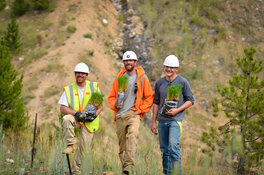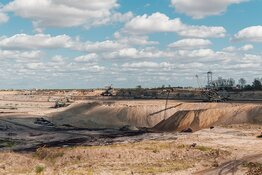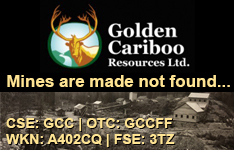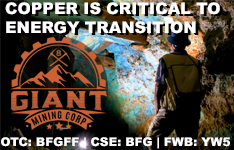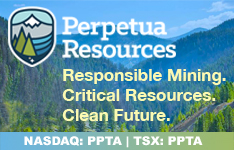A deadly mudslide at Freeport-McMoRan Inc.'s (FCX:NYSE) Grasberg mine in Indonesia has rocked the global copper market, forcing the company to declare force majeure and halting operations at the world's second-largest copper mine. The incident occurred on September 8 when approximately 800,000 metric tons of wet material surged through multiple levels of the underground Grasberg Block Cave, killing two workers and leaving five others missing. According to Reuters, Freeport stated that the mine may not return to pre-incident operating rates until 2027, with copper production in the fourth quarter expected to be "insignificant" due to the extent of the damage.
This unexpected disruption triggered a sharp rise in copper prices, with three-month futures jumping more than 2% to $10,496 per ton on the CME. In London, prices surged to US$10,485 per ton, marking a 15-month high. As reported by Mining.com on September 24, the market reacted swiftly, sending Freeport's stock down as much as 17% and wiping out US$11 billion in market value. Meanwhile, rival producers like Glencore Plc (GLEN:LSE; GLN:JSE; GLCNF:OTCMKTS), Teck Resources Ltd. (TECK:TSX; TECK:NYSE), and Antofagasta Plc (ANTO:LSE;ANFGF:OTCMKTS) saw gains of 3% to 7.4% on the day. The Australian market also felt the shift. As noted by Eddy Sunarto of Market Index, BHP Billiton Ltd. (BHP:NYSE; BHPLF:OTCPK) and Rio Tinto Plc (RIO:NYSE; RIO:ASX; RIO:LSE; RTNTF:OTCMKTS) each rose around 3%, while copper-focused players such as Sandfire Resources Ltd. (SFRRF:OTCQB; SFR:ASX) and Capstone Copper Mining Corp. (CS:TSX) surged more than 8%.
The implications for global supply are significant. Grasberg accounted for roughly 4% of global copper output in 2024, producing 815,000 metric tons. According to Benchmark Mineral Intelligence, the cumulative production loss through the end of 2026 could total 600,000 tons. That's nearly equivalent to the annual production at Collahuasi, the third-largest copper mine in the world. Reuters reported that BMI has revised its 2026 forecast, increasing the expected global copper supply deficit from just 72,000 tons to 400,000 tons.
Supply Side Crunch
The supply crunch doesn't end there. Citigroup has warned of a similar shortfall, projecting a further deficit of 350,000 tons in 2027 unless prices rise significantly to encourage new supply. Morgan Stanley also weighed in, pointing out that prior to the Grasberg disaster, global copper output was expected to grow by about 2.3% in 2025. Now, the removal of even 0.22 million tons from this year's forecast, as estimated by Freeport's updated guidance could deepen what was already an anticipated supply deficit. As Robert Sinn wrote on September 24, "the incident at GBC is a very big deal," not only for Freeport but for the entire global copper market.
Grasberg is not the only site to suffer setbacks this year. Ivanhoe Mines Ltd.'s (IVN:TSX; IVPAF:OTCQX) Kakula operation in the Democratic Republic of Congo was hit by seismic activity and flooding in May, and Chilean state producer Codelco faced a tunnel collapse at its El Teniente mine in July, resulting in six fatalities. Reuters columnist Andy Home observed that these incidents reflect a growing risk associated with the industry's dependence on a small number of mega-mines, which collectively produce over a third of the world's copper. "If something goes wrong," he wrote, "it is likely to go wrong at scale."
This disruption comes as the world enters what many believe is the early phase of a new commodity supercycle. According to a report by Ahead of the Herd, copper prices have climbed 16% year-to-date, driven by demand from electric vehicles, renewable energy, and even artificial intelligence, all of which rely heavily on copper wiring and components. BloombergNEF projects that copper demand will increase by 53% by 2040, with a potential supply shortfall of 30% by 2035.
While prices peaked near US$5.75 per pound earlier this year, they remain below the threshold many analysts believe is needed to justify major new mine development. Robert Sinn suggested that prices may need to exceed US$6 or even US$7 per pound to sufficiently incentivize new production, especially as ore grades continue to decline and permitting timelines stretch for decades. He noted, "We could see copper leap to US$7/lb" by 2026 if deficits persist and global demand accelerates.
Following The Shutdown
In the wake of Grasberg's shutdown, a number of other copper companies could be well-positioned to benefit. Many companies are strategically located to supply the U.S. domestic market, potentially commanding premium prices as geopolitical risk intensifies and governments prioritize domestic supply chains.
All signs now point to a tightening copper market in 2026 and beyond. Before the Grasberg disaster, analysts were split on whether the market would see a minor surplus or deficit. But now, the consensus is shifting. As reported by Robert Sinn, JP Morgan had previously forecast a 160,000-tonne deficit for 2026. With Grasberg's production curtailed, the scale of that shortfall may be significantly larger.
The broader impact of this disruption extends well beyond Freeport-McMoRan. As Reuters notes, "risk is becoming more concentrated as the world relies on a small group of mega mines." With demand climbing and new supply lagging, the pressure is on and the stakes have never been higher for the copper market.
Important Disclosures:
- Giant Mining, Coppernico, and Emerita Resources are billboard sponsor of Streetwise Reports and pays SWR a monthly sponsorship fee between US$3,000 and US$6,000.
- As of the date of this article, officers and/or employees of Streetwise Reports LLC (including members of their household) own securities of Giant Mining and Coppernico
- James Guttman wrote this article for Streetwise Reports LLC and provides services to Streetwise Reports as an employee.
- This article does not constitute investment advice and is not a solicitation for any investment. Streetwise Reports does not render general or specific investment advice and the information on Streetwise Reports should not be considered a recommendation to buy or sell any security. Each reader is encouraged to consult with his or her personal financial adviser and perform their own comprehensive investment research. By opening this page, each reader accepts and agrees to Streetwise Reports' terms of use and full legal disclaimer. Streetwise Reports does not endorse or recommend the business, products, services or securities of any company.
For additional disclosures, please click here.


